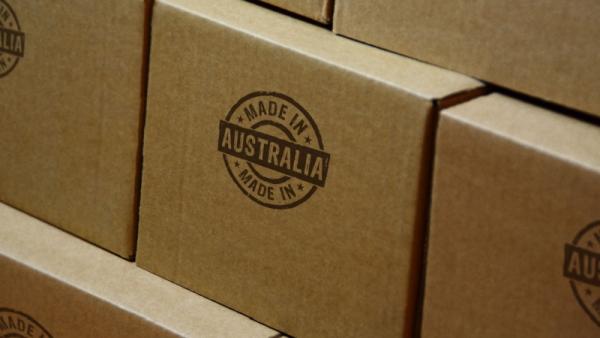Skorzewiak / Shutterstock

Marina Zhang, Associate Professor – Research, Australia-China Relations Institute, University of Technology Sydney |
Note: This article appeared in The Interpreter on April 22 2024.
The ‘Future Made in Australia Act‘ set out by Prime Minister Anthony Albanese signifies a shift from a neoliberal to a mission-driven approach, aiming to tackle grand challenges such as climate change, technological sovereignty, and economic sustainability. This shift reflects policymakers’ adaptability in transforming the country from a resource-export, commodity-based economy to one that is innovation-driven and focused on adding more value, amidst a rapidly changing technological and geopolitical landscape.
However, to ensure that this shift transcends merely joining a global subsidy arms race, policymakers must establish a clear direction for Australia’s ‘moonshot’ strategy. Effective programs should foster a business environment that benefits a broad spectrum of Australians, not just a few established industries and firms.
The global landscape is experiencing an intensifying arms race in mission-driven industrial policies, as advanced nations seek to enhance supply chain security for critical minerals and industries to protect their national security. However, nations that enter this race without carefully considering their unique resources and economic structures risk misdirecting efforts, potentially wasting valuable resources and harming their long-term competitiveness. Danielle Wood, head of the Productivity Commission, cautions that supporting industries without a long-term competitive advantage can lead to ongoing costs.
Government planners may not have enough control to ensure the long-term success of industrial policies, which are often influenced by political factors such as upcoming elections in democratic nations. By aligning with the global trends, the government may be seeking to demonstrate proactive leadership and economic stewardship, which could prove to be politically advantageous but economically unsustainable. Additionally, other countries might respond to a nation’s policies with their own subsidies, potentially leading to a competition that diminishes the overall effectiveness of these policies and escalates geopolitical tensions.
For example, the clean-energy incentives of the United States’ Inflation Reduction Act have already sparked international tensions by disadvantaging allies in industries such as battery and electric vehicle production, leading to retaliatory measures by other countries.
There has been positive responses to the ‘Future Made in Australia Act’, emphasising its potential benefits for the climate, workers and firms in relevant sectors. However, there are valid concerns about the effectiveness of the proposed act and the potential for unintended consequences.
Industrial policies that bolster domestic manufacturing and technological capabilities risk exacerbating wealth inequality if not meticulously crafted and executed. These policies often channel subsidies and incentives toward large corporations with established technologies and manufacturing bases, consolidating their market dominance. A prime example is Intel’s disproportionate benefit from the US CHIPS Act. As a leading semiconductor manufacturer, Intel leverages substantial funding from the CHIPS Act to enhance its domestic manufacturing capacity, potentially at the expense of smaller, innovative firms.
There are notable regional disparities in Australia. Household income and net wealth in mineral-rich states such as Western Australia significantly outpace those in non-mineral-rich states, largely due to a robust mining sector. According to the ‘Future Made in Australia Act’, targeted sectors such as building manufacturing capabilities in higher-value-added activities – especially in the renewable energy sector that relies on smelting and processing critical minerals – allow states with a strong mining base to enhance their existing industrial foundations.
If more subsidies are channelled towards large mining corporations, this could lead to a greater focus on the mining sector, primarily benefiting large mining and manufacturing companies that have the established capabilities to engage in value-added activities. This could potentially widen regional disparities and inequities in wealth distribution, given Australia’s economic structure is characterised by a strong presence of small and medium-sized enterprises (SMEs), which are deeply rooted in and provide goods and services for local communities across different regions of the country.
Australia faces significant challenges in establishing itself as a major player in the global tech value chain, including a relatively small domestic market, a large number of SMEs scattered across regional areas, and a lack of access to the global venture capital investment. It remains to be seen how the ‘Future Made in Australia Act’ will facilitate this transition for SMEs and enable them to benefit from these changes.
Investment in infrastructure, particularly in digital connectivity, transport and enabling technologies, is essential. Similarly, investing in capability development and training programs can ensure that the benefits of the proposed act reach a broad range of Australians, addressing social equality issues and not merely benefiting those in already prosperous sectors such as mining, along with large companies.
Establishing clear metrics to measure the success of the ‘Future Made in Australia Act’, and adjusting strategies based on these evaluations will be crucial to assess whether the initial investments can attract more resources and capital from other parts of Australia or from other countries. This involves not just counting immediate jobs or new technologies that are created, but also examining how the mission helps create opportunities that benefit society and the economy in the long run.
The May budget this year will surely attract a lot of attention, as it marks a watershed moment in what is being called a defining and decisive decade for Australia.
Author
Dr Marina Zhang is Associate Professor – Research at the Australia-China Relations Institute, University of Technology Sydney.


